What happens in the world's deepest gypsum mine?
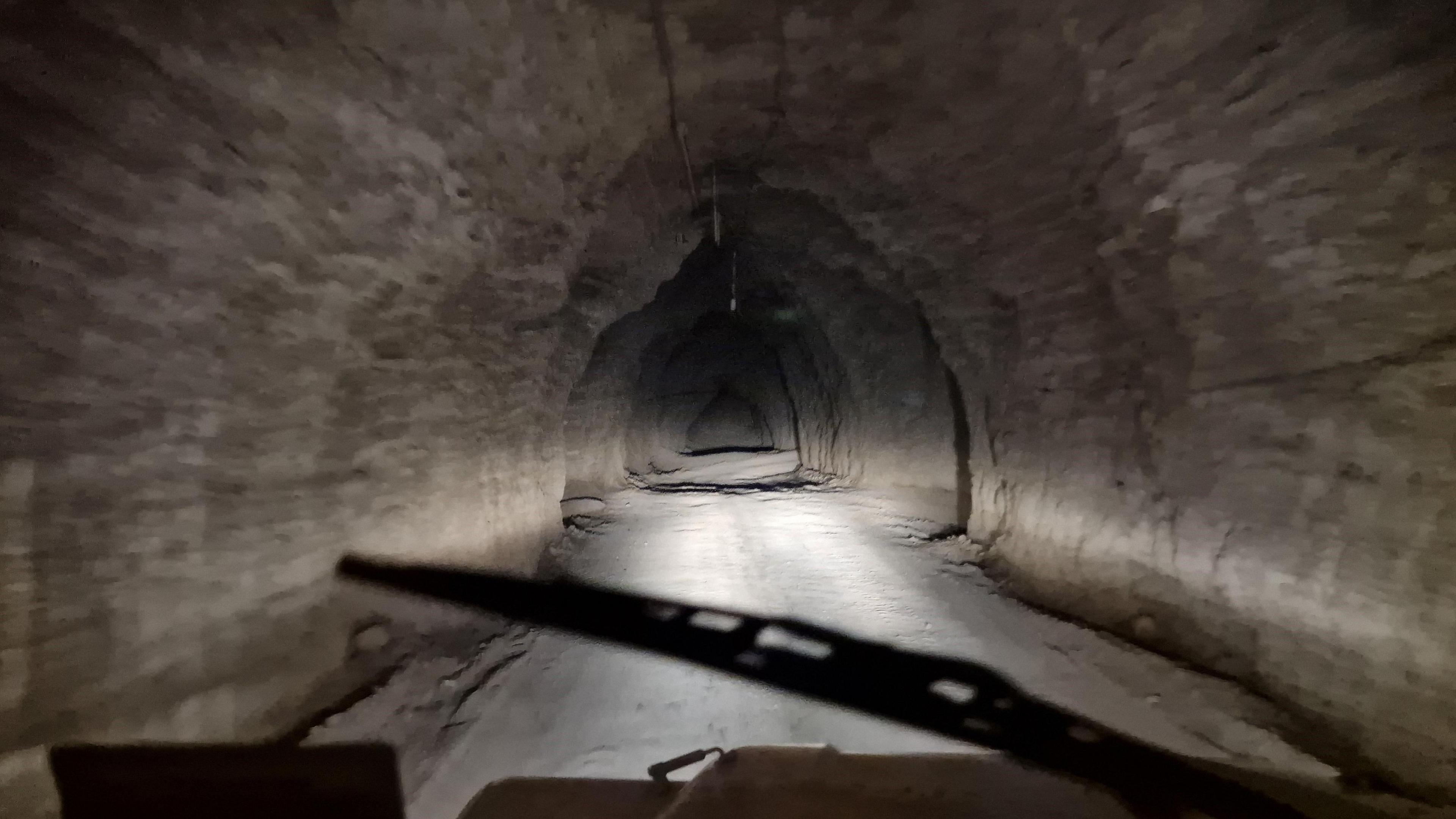
The mine is deep under rolling farmland in Cumbria
- Published
Gypsum may be an unfamiliar name to many but we are surrounded by it every day. It is a mineral used to make types of plaster which coat our homes, schools and offices - and in Cumbria sits the world's deepest gypsum mine.
Outside the small village of Long Marton, against the backdrop of the North Pennines, stands a bungalow in the corner of a field. It is perhaps the only clue that something else is happening close by.
Underground, at a depth of 1,000 ft (305m), is Birkshead drift mine where a lengthy system of conveyor belts snakes its way from where the stone is mined to where it is treated.
"You've got to have your wits about you all the time, but I just feel at home down here," says shift manager Peter Richardson. "I'll probably miss it when I retire."
The drift mine, near Appleby-in-Westmorland, sits under rolling farmland and supplies the raw materials to make plasterboard for the building industry, something it has been doing for almost 50 years.
Its 30ft (9m) high tunnels, wide enough for a Range Rover to drive through, are grey and there is a smell of dust in the air.
"With ceilings as high as they are you don't really feel like you're in a mine," says one of the workers.
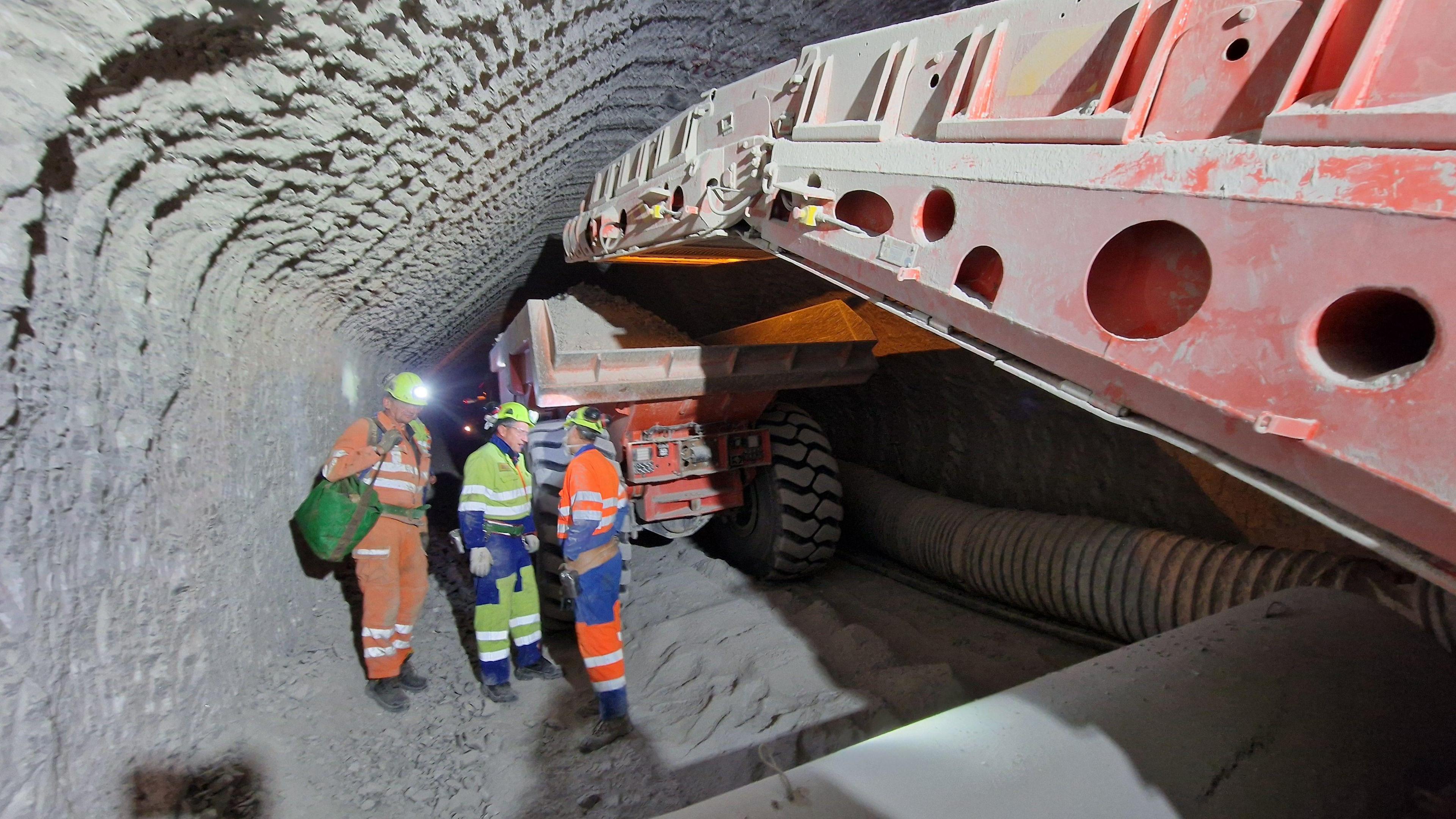
The mine has been operating since 1977
The underground road leading down to where the gypsum is extracted is steep and with sharp bends.
Staff here say that without external contact there is no way of knowing what the weather is like outside. But while they are cut off, they are reminded of life continuing above them with the smell of freshly cut farmland grass making its way through the ventilation system.
But the reality of life underground is never too far away.
"If you're down a mine and your light fuses - which has happened to me in the past - it's not good," Mr Richardson says.
"Now we've got a little pen torch, just in case, whereas the old pitmen's lamps used to have a little bulb, but if your battery fused you were up the creek really."
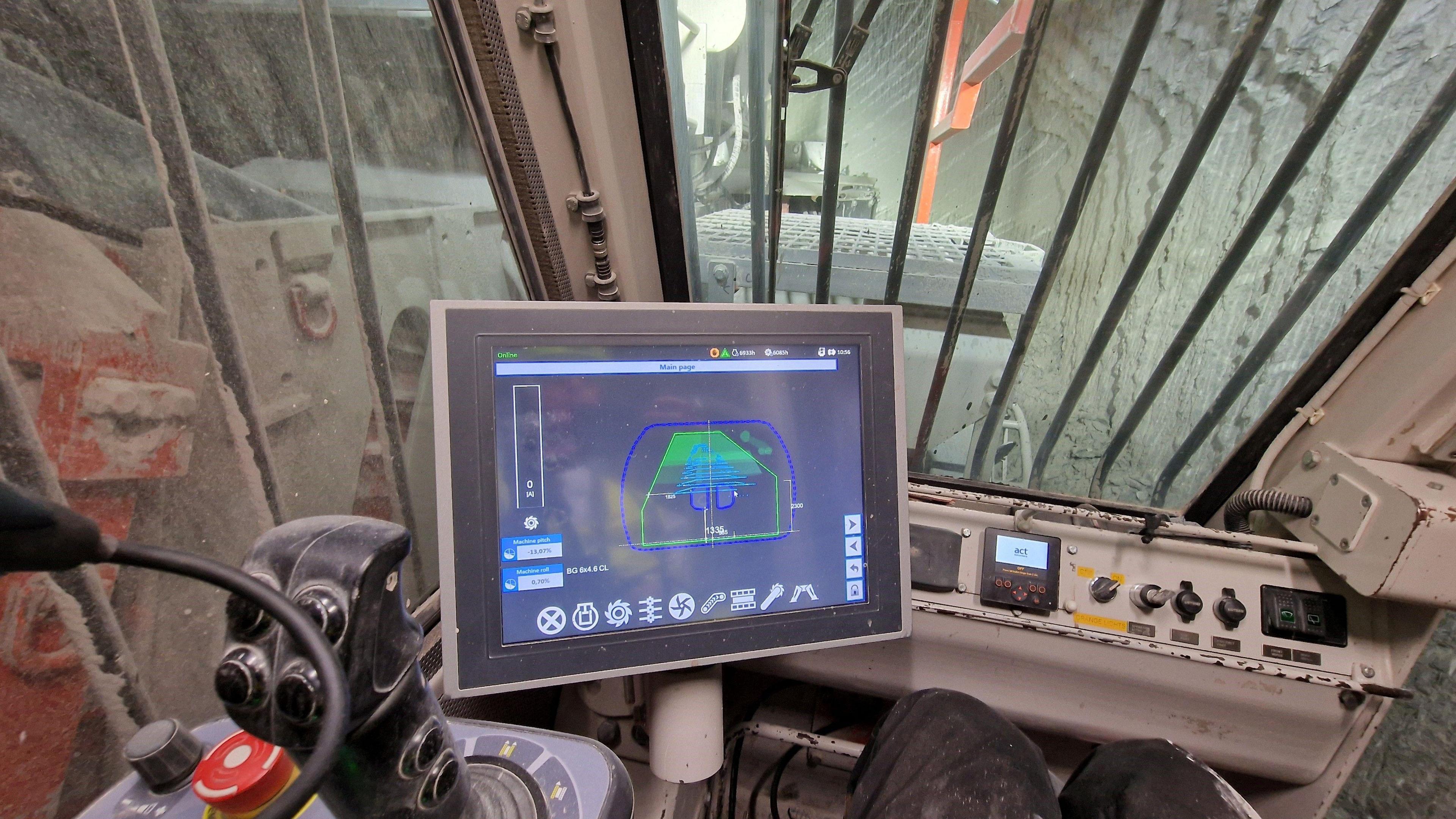
Once the machine is extracting the gypsum, the tunnel is engulfed in dust
The mine has been here since 1977 and these days machines can cut through 3.3ft (1m) of gypsum per hour.
"It just peels it off," Mr Richardson explains.
Conveyor belts then take thousands of tons of material a day to a factory in Kirkby Thore, operated by British Gypsum.
The machine that cuts the stone looks a little bit like a giant porcupine.
A staff member sits in an air-conditioned cab so they are protected from the dust, which engulfs the tunnels when the machine operates.
The only way to see what is happening is through monitors inside the cab.
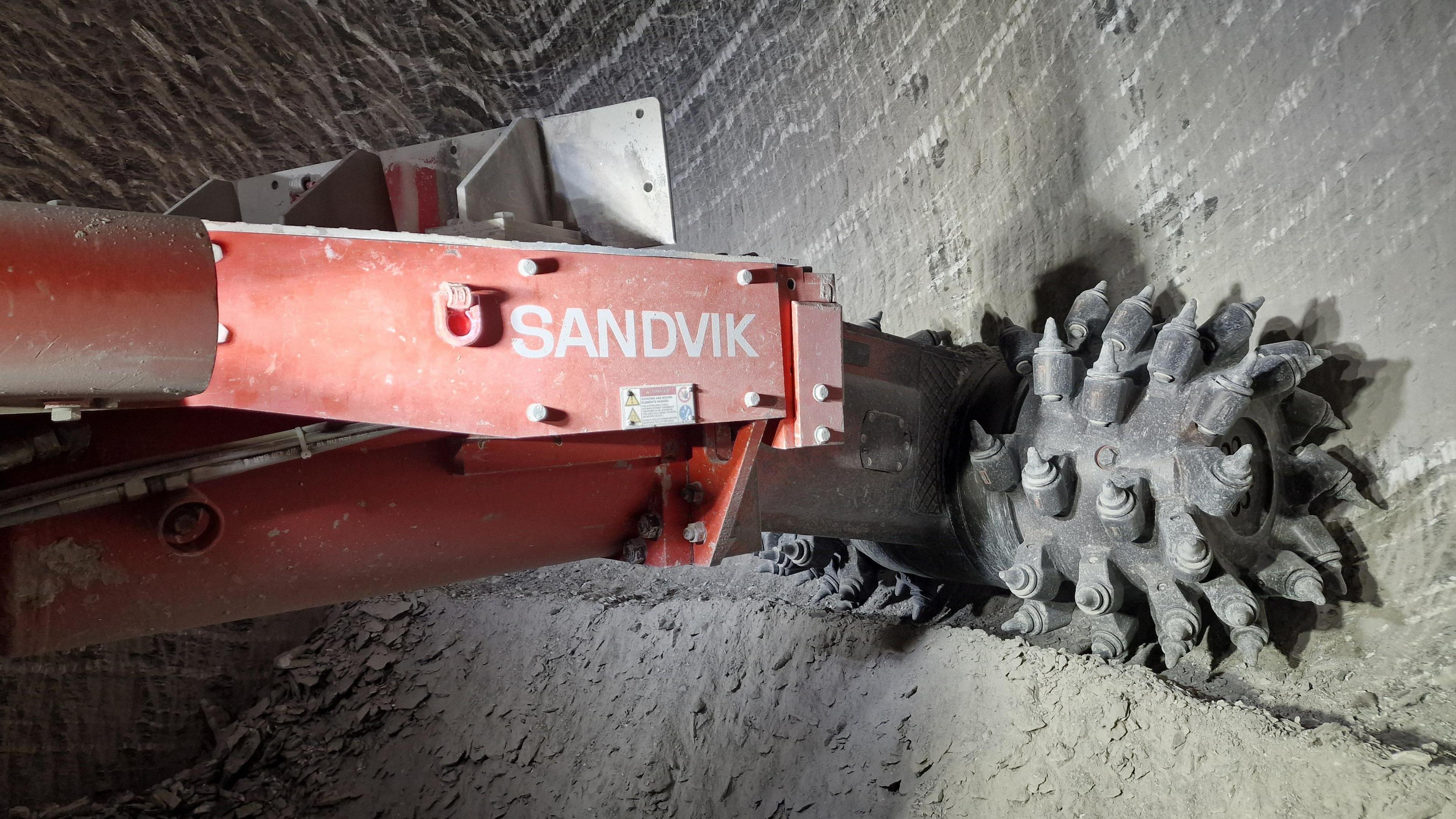
The machines can cut 3.3ft (1m) per hour through the gypsum
Some belts travel up to 3,300ft (1km) each but, as they roll back on themselves, they are double that in length.
Replacing them is a "big undertaking", Mr Richardson says.
"We've got a few of the lads here who've done it a few times and you need them lads on the job - they know what they're doing.
"You have to clamp it up and chain it, you can't just cut the belt because of the tension on it.
"You'll end up with a concertinaed heap at the bottom."
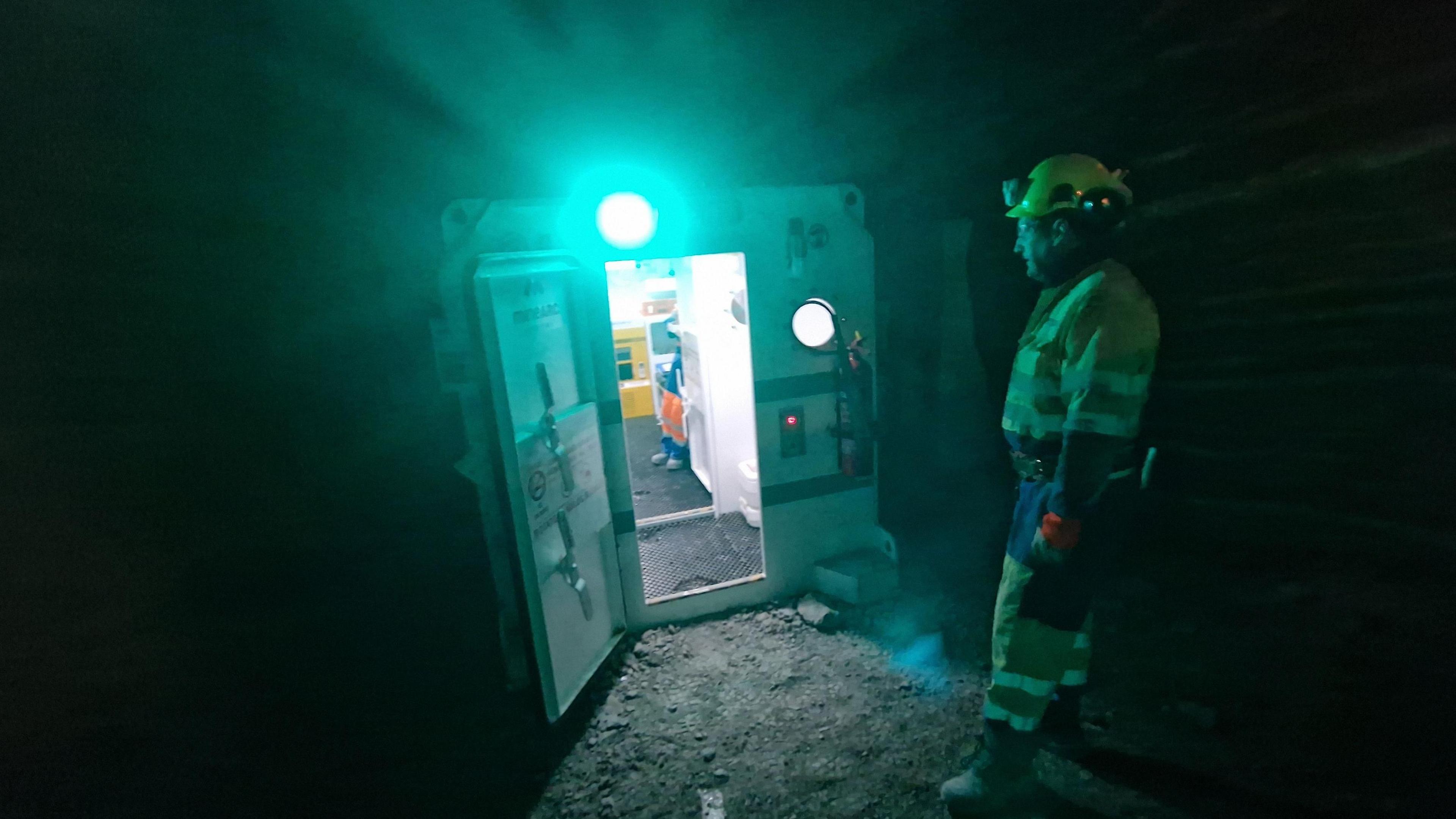
In case of emergency there are rooms for staff to take shelter
Safety is obviously a major focus and were things to go wrong there is a specially built room which has its own life support system and supplies of food and water.
"If I had a vehicle fire and the tyres caught fire, there would be thick black smoke and you'd struggle to see, hence the strobes on there to guide you in," Mr Richardson says.
It would take about an hour to walk back to the surface from here, but he says he feels safe working at Birkshead.
"The fear factor just isn't there, you don't think about it.
"You're obviously aware of your surroundings and you check where you're going to be working.
"Dare I say it, you never take it for granted.
"Like the old saying from the coal miners: It's always the good roof that'll get you, not a bad roof because you've got that sorted."
Follow BBC Cumbria on X, external, Facebook, external, Nextdoor and Instagram, external. Send your story ideas here, external.